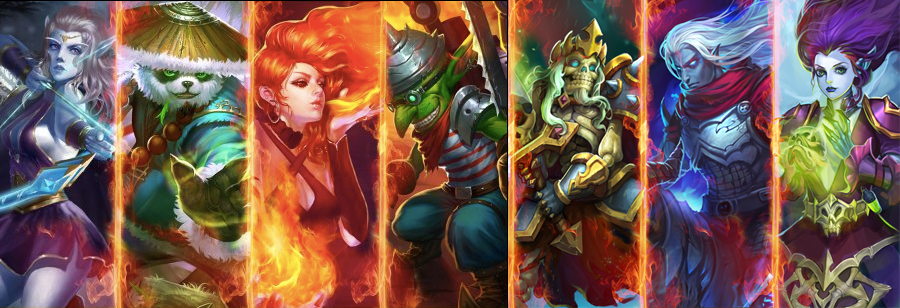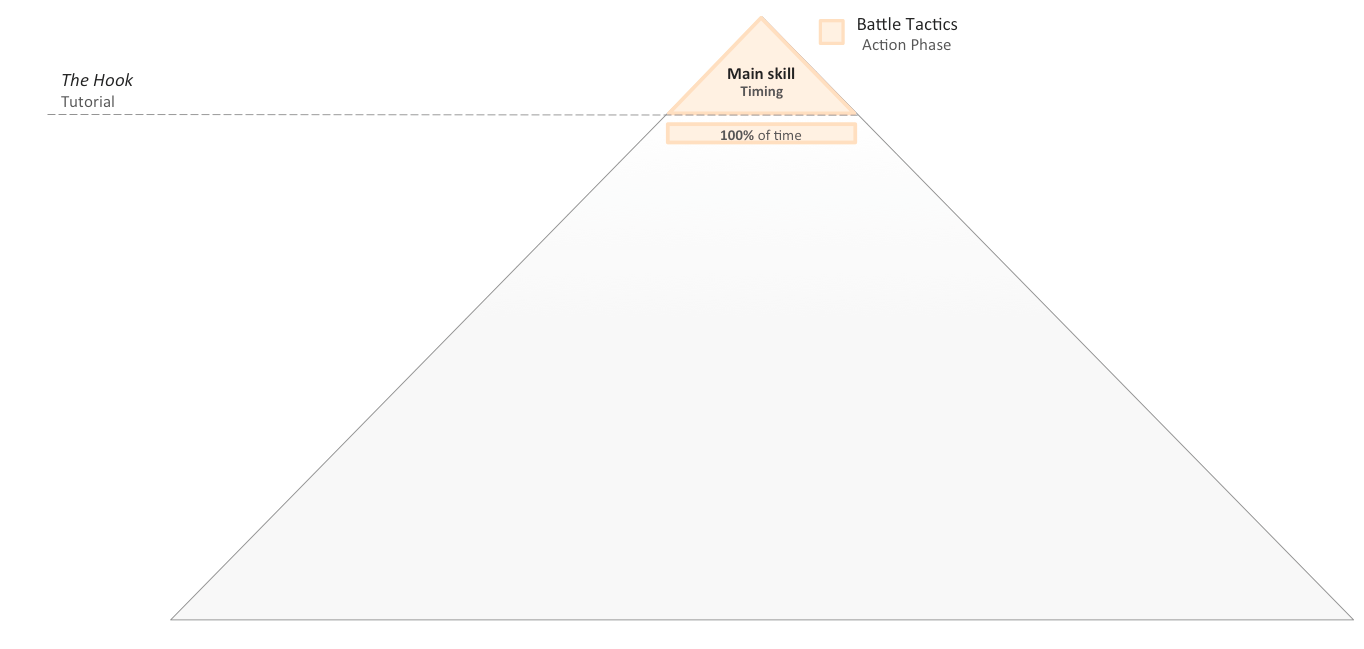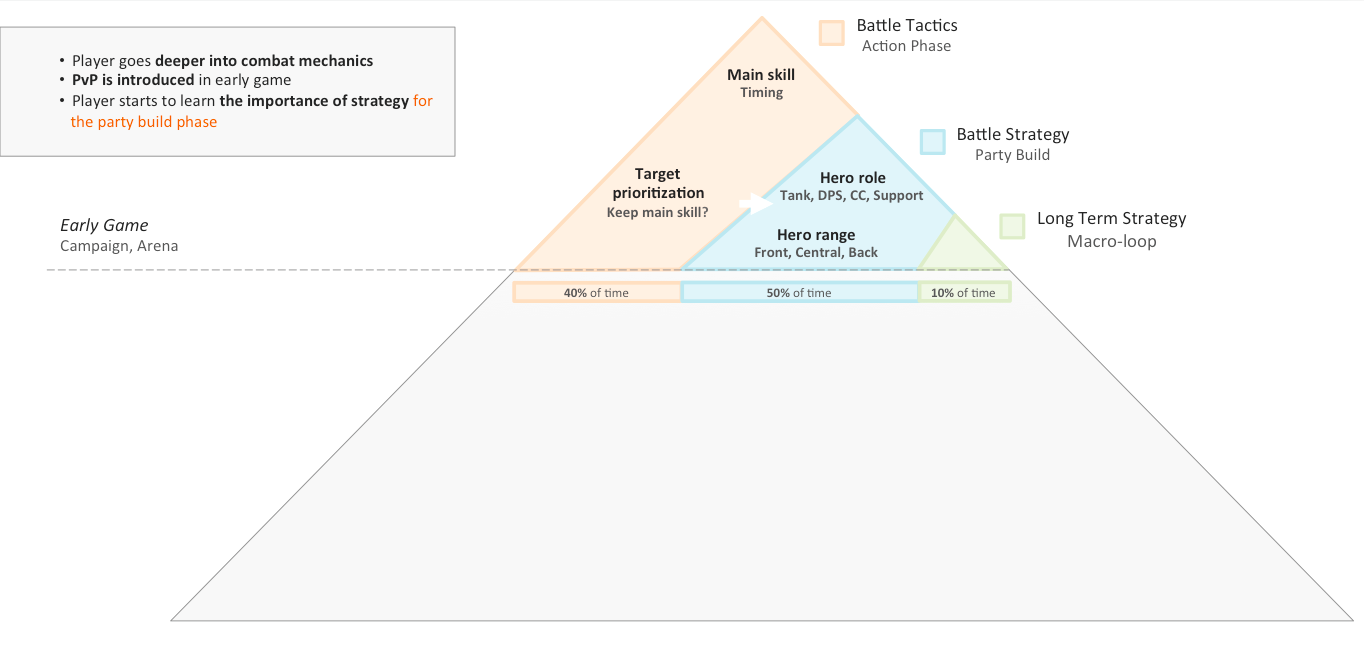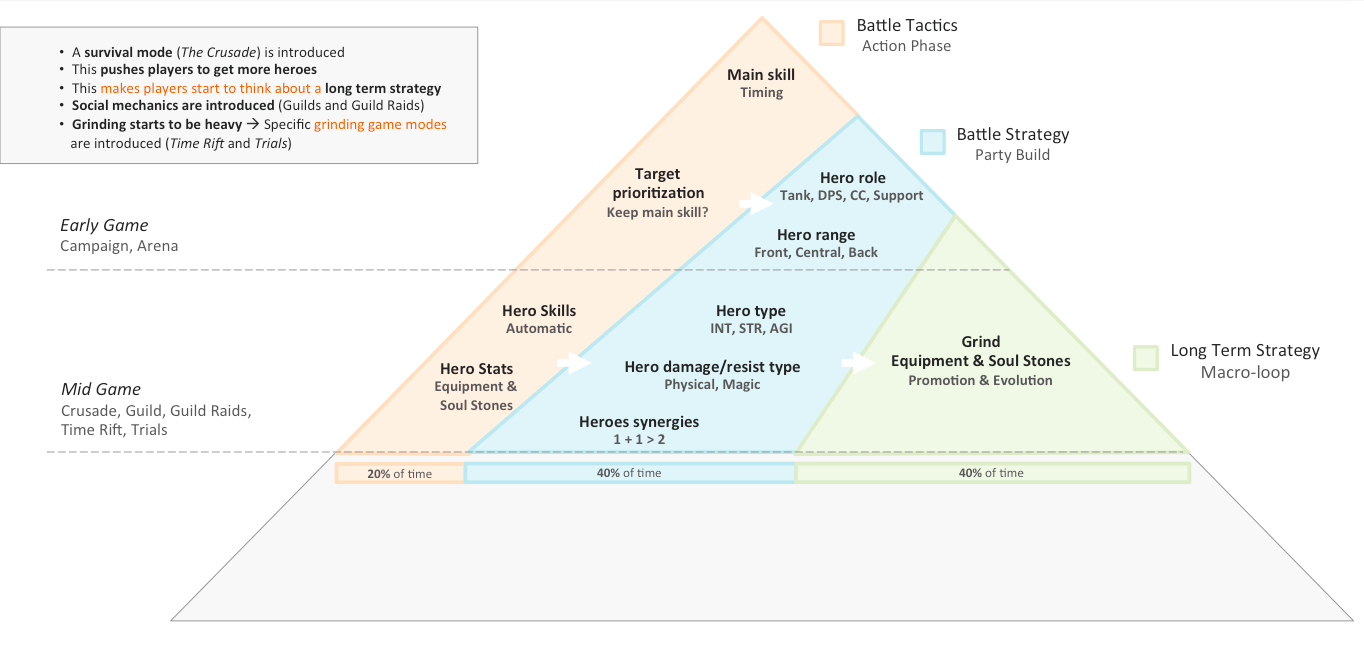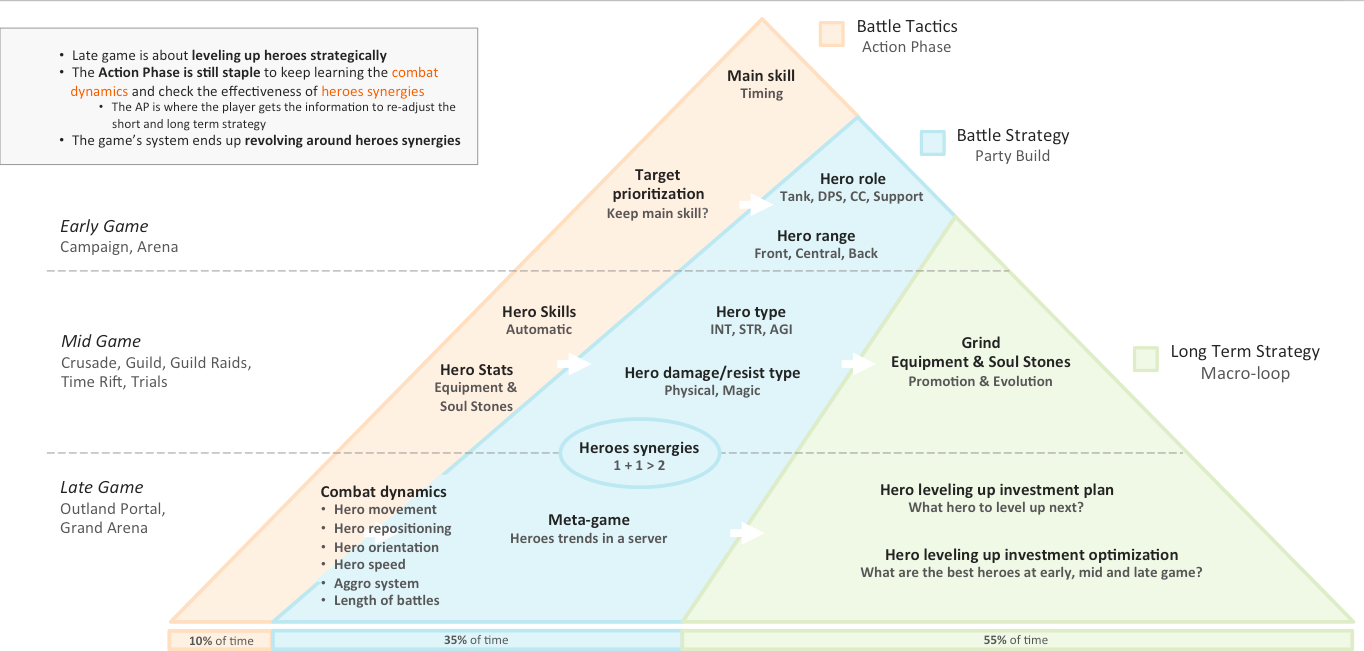Gameloft game designer Toni Sala told Gamasutra about the beauty of the action midcore role-playing game Heroes Charge by Chinese-American developer uCool, which is being cloned no less actively than Clash of Clans today.

In mobile, the RPG genre, apparently, is now in its heyday. The most cloned role-playing game of the past 2015 was Heroes Charge. Due to its approach to the genre in particular and frituplay in general, the game has made a small revolution among RPG projects (and also generated a lot of controversy).
Heroes Charge is a great game in many aspects (including monetization, retention, balance, and progress balance). Anyway, I want to draw attention to a less noticeable aspect of the game, which, nevertheless, is the basis of everything else. I want to talk about the Combat System.
Heroes Charge is built on a very sophisticated combat system. Players are trained to work with it throughout the entire progress of the game – step by step. After months of playing, users can still learn about more and more new aspects of the combat system that are of great importance, affecting the battles.
Heroes Charge Combat System
Heroes Charge has adopted the basics of its combat system from MOBA games like DOTA 2 and League of Legends. The action component was completely simplified for successful adaptation to the mobile platform, but the quintessence of the combat system remained: heroes, skills, stats and synergies (heroes, skills, stats and synergies).
Because of the platform, the developers decided (by the way, it was a great decision) to put the main emphasis in the gameplay on strategy and hero management, as well as to minimize the action component (to zero in PvP mode, to be more precise).
The result is a very well-developed and interesting combat system that keeps users in the game for months throughout the game.
Hook: activation of cool heroic skills
The tutorial immediately puts players in the thick of the battle. Developers use combat as a hook. Players are faced with a superficial, but the coolest part of the game system – with heroes and their ultimate skill (Ultimate skill).
When getting acquainted with the game, users will learn about the energetic nature of the ultimate skill and how important timing is.
Timing is important not only for the ultimate skill, but also for the entire combat system.
So in the tutorial, the player learns about how the basic game mechanics work, which applies to all game modes.
The initial stage of the game: learning the basics of combat
In the first stages, players learn the basics of combat mechanics. Users are also beginning to understand the importance of strategy when building a party of heroes. So at the very beginning, the focus shifts from tactics to strategy and management.
Players will learn about the basics of combat tactics: prioritization when choosing a target (Target Prioritization). The decision when to activate the ultimate skill of the hero is very important. Should it be activated as soon as it becomes available? Or maybe it’s better to wait and use it when the opponent’s tank hero is defeated?
The need for proper prioritization forces players to come to their senses and start paying attention to the roles of heroes in the team. Building a balanced team is the key to success. Information about the heroes’ strike radius is also important to learn at this stage. Also, to build a competitive team, you should take into account what positions they occupy on the field (front, center positions, rear).
PvP mode is represented in the early stages by the Arena. He once again proves the importance of strategy in building a team, since autoboy is the only possible option in it. This means that during the fight, the player cannot interact with the team in any way.
The middle stage of the game: the plan is important
To play well in the middle stages, players need to better understand the combat system. It is at this time that users begin to pay special attention to Automatic Skills, and not only to the ultimatum.
The type of skill, its recovery time and trigger conditions are the parameters that the player must learn and master over time.
The long list of parameters (which is ignored in the early stages) now had to be taken into account. This leads players to understand the types of heroes (INT, STR or AGI) and hero Damage/Resistance Types, which, in addition to automatic skills, are key principles for building teams with good synergy between heroes.
Hero synergy is perhaps the most important principle of the Heroes Charge combat system. Their comprehension, testing and use is a pleasure in itself.
When the player learns to work and experiment with the synergy of heroes, the Crusade mode opens. In fact, this is a survival mode in which players need to have as many heroes as possible and at the same time try to get the most out of them, taking advantage of their synergy. This, taking into account the scarcity of resources, forces players to focus on a long-term strategy.
[Crusade mode is a mix of a regular campaign and an arena. The hero goes from battle to battle on the map. Only here he fights with teams of other players. Heroes’ health is not replenished after each battle. But it is possible after each battle to replace the dead / severely injured fighters with those available in the player’s deck until they all die, – approx.editorial offices].
Late-stage play: It all comes down to strategy, but battles are still important
In the later stages, players must master all tactical aspects of combat well. Seemingly small or insignificant aspects of the dynamics of combat (Combat Dynamics) can seriously affect its outcome. So paying great attention to movement, changing positions, orientation, speed of heroes during battles is critically important for getting to the top positions of PvP ratings.
Being aware of changes in the meta-game and being able to anticipate them is also very important. This encourages you to play even more thoughtfully than before. Which hero should I level up, which hero works best with my best hero, which hero do I equip with the cool armor I recently received? These are the questions that players ask at a late stage of the game.
It all comes down to strategy, but, as throughout the progress of the game, battles remain an important component. Even in PvP modes, in which the player cannot interact with his party, paying attention to how the battle is going is important for further mastering the dynamics of the battle, checking the effectiveness of his strategic decisions and, if anything, implementing a long-term development plan for the team.
PvP: the cherry on the cake
At the top of the well-developed and interesting Heroes Charge combat system is an excellent asynchronous symmetric PvP mode.
It seems that asynchronous PvP is the right way for a midcore, shareware mobile game. Supercell proved this with its asymmetric PvP formula in Clash of Clans and Boom Beach.
Asymmetric in the sense that active and passive players have different gameplay and different tools for interacting with the game. Passive players need defensive structures to build an indestructible base. In turn, active players need to use their troops to smash the base of the defending enemy.
The developers of Heroes Charge left the asynchronous aspect, but replaced the asymmetric with a symmetrical one. The latter implies that both active and passive players have the same tools in battle. There is nothing new in this. Many games (especially RPG) have similar PvP. However, the Heroes Charge developers have made one key decision: in PvP modes, autoboy is forced, players cannot interact with the team in any way.
This has two consequences: firstly, the fight is as honest as possible. The attacker in fact has no advantages. Secondly, it focuses the player’s attention on the creation of a team and the synergy of heroes, which forces players to focus on strategy, and not on polishing the skill of pressing the ultimatum skill button.
Anyway, part of the information about the defending team is open to the attacker. So, after all, the attacker has the advantage. But this is compensated by the fact that the attacker can compete only with those players who are located above him in the top.
This, coupled with the elaborate and complex combat system described above, is one of the best examples of asynchronous PvP that exists today in mobile.
Conclusion
Heroes Charge is excellent in many aspects, including the VIP system, monetization strategy, retention, balance, hero design, and so on. But it was the combat system that first caught my attention and has kept me in the game for over a year now.
The game starts with action and tactics, thereby catching the player, but quickly shifts the focus to strategy and hero management.
However, the combat phase remains the most important component, since it allows the player to receive accurate feedback on previously made strategic decisions. The dynamics of the battle is tied to progress, and changes depend on the strategic decisions of the player. Paying attention to how the battles are going is important, even if there is no interaction with the user.
Synergies are ultimately the foundation of a combat system. The search for new synergies in the analysis of the subtleties of the combat system is in itself a reward.
Ultimately, the game has a very well-developed combat system that opens up to players gradually, in layers (from simple to complex). This allows players to learn the intricacies of the project for a long time. Some players even start playing from the beginning on another server, wanting to take advantage of the fact that they already know how the game works.
A source: http://gamasutra.com

